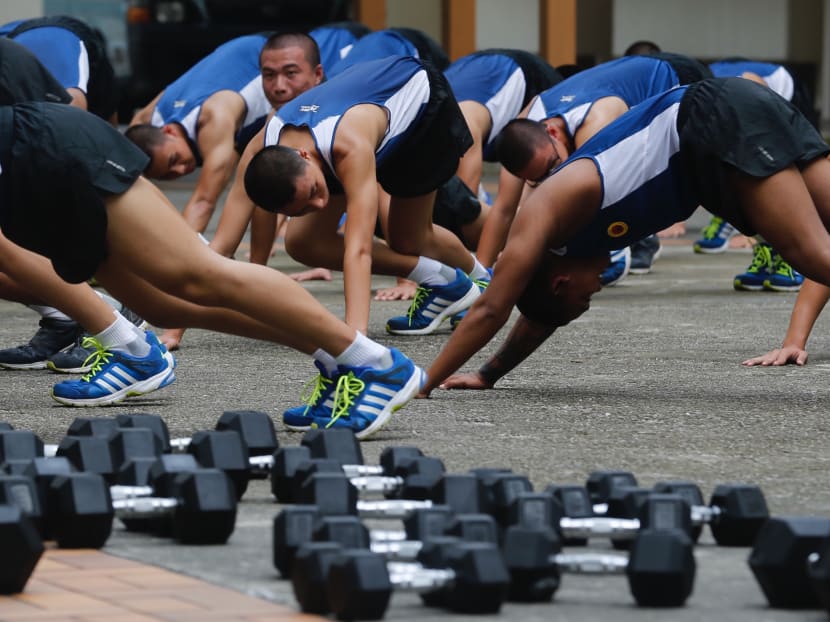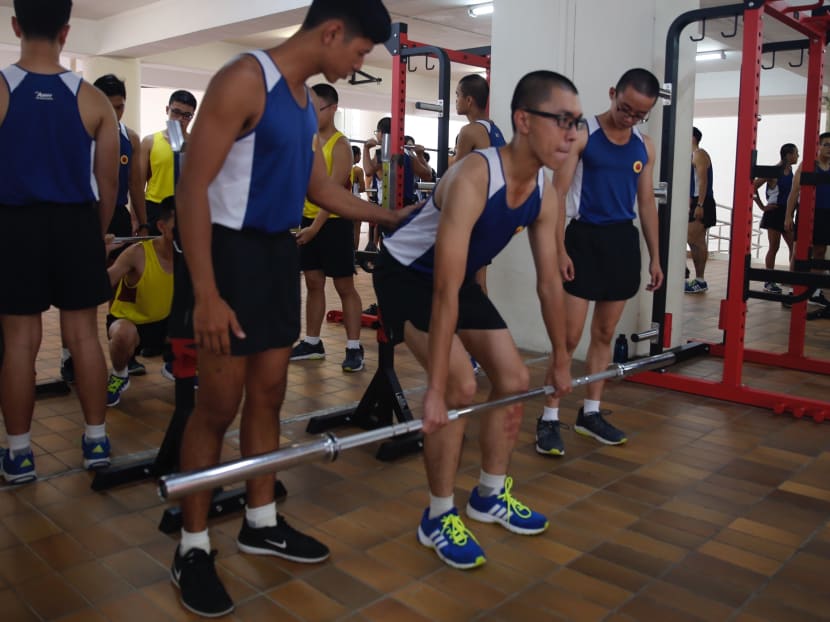SAF to inject psychological stressors into combat training as part of trials
SINGAPORE — To beef up soldiers' psychological resilience, the Singapore Armed Forces (SAF) will begin trials in the next six months to inject social, cognitive and emotional "stressors" into combat training in a controlled manner.
SINGAPORE — To beef up soldiers' psychological resilience, the Singapore Armed Forces (SAF) will begin trials in the next six months to inject social, cognitive and emotional "stressors" into combat training in a controlled manner.
Soldiers operating in small teams could be tested on how they react when a team member goes missing, while those out on a mission could be tested on how they respond when the assignment is stretched out. Others will be given less time than usual to complete tasks because of a change in scenario.
Behind these "task-specific resilience programmes" are psychologists from the SAF's Centre of Excellence for Soldier Performance (CESP), who have been working with unit commanders in the last six months to develop realistic and varied training scenarios.
The plans to boost mental resilience among soldiers were announced in December last year at the inauguration of the CESP.

Speaking to reporters on Tuesday (June 19), CESP head Yee Kok Meng, 43, said the centre aims to study and pin down the psychological stressors unique to each military vocation.
"Our aim is to really develop challenging training scenarios, in a safe and effective manner," Senior Lieutenant Colonel (SLTC) Yee said.
The trials come on the heels of an earlier initiative, rolled out last year, where soldiers undergoing basic military training are taught resilience-building concepts and equipped with knowledge and skills, including breathing techniques, to manage stress and anxiety.
Asked if the upcoming trials are akin to prisoner-of-war training, SLTC Yee assured that they were based on lessons from psychology.
The initiative is one of several measures where the SAF is tapping into science in a big way, in order to better train and prepare soldiers for their missions.
Science also features in a fitness training regime customised to the needs of individual vocations, which has been rolled out to all army combat units including the Infantry, Guards and Armour formations, SLTC Yee said.
The four-week Vocation Fitness Training programme will be implemented fully across combat support units, such as Artillery and Signals, by the end of this year. Combat service support units comprising vocations such as logisticians and transport operators will benefit from the programme by the end of next year, the Ministry of Defence (Mindef) said.
The programme is designed to better prepare soldiers for advanced combat training in their respective vocations.
Infantrymen, for instance, walk long distances and carry heavy loads. This means a soldier's core, lower back and lower body must be strong and the fitness training programme targets these areas, said SLTC Yee.
The programme is in four parts, comprising physical, functional and combat training, and active recovery.
For instance, physical training includes weightlifting activities to build strength and power. This has shown to increase a serviceman's lifting capability by 20 per cent, meaning there is a lower chance of injury through NS if the serviceman carries heavy loads.

Full-time national serviceman Kugan Senivasan, 18, a trooper with the 4th Battalion, Singapore Infantry Regiment, began the training programme this week. He told reporters after completing combat circuit training with a loaded field pack on Tuesday that the programme was the toughest he has undergone in NS thus far.
"It's the most rigorous training that we have had. I believe this will be very useful because aside from the physical training that we did in basic military training, (this programme) is more tailored to our vocation. So, it does help us a lot in our infantry life," he said.
THE SCIENCE BEHIND STAVING OFF HUNGER PANGS
Meanwhile, science also goes behind the food that soldiers consume. Soldiers from Infantry, Guards and Armour infantry units have been receiving a revised "recommended daily allowance" for food intake, which is matched to their activity levels.
For instance, SLTC Yee said soldiers would previously feel peckish between post-breakfast training and lunch. Soldiers are now given a snack, such as a banana or an energy bar, after they wake up and before moving off for physical training and breakfast. "The soldiers have said they are no longer hungry between meals," said SLTC Yee.
WEARABLE DEVICES TO CUT INJURY RISK
The SAF had earlier announced a study involving 150 full-time national servicemen (NSFs) making use of wearable devices to monitor their physiological conditions and collect data for further analysis to help the Army make enhancements to training programmes.
Cadets from up to two wings at the Officer Cadet School will be the first to try out the devices, which could keep tabs on parameters such as pulse rates, skin temperatures and sleep activity. The six-month trial will begin in about two months.
The devices will allow the CESP to track training intensity and volume, so as to reduce the risk of injury from over-training.

Pooling real-time data will also allow the SAF to assess the lead indicators for health hazards, such as elevated body temperatures and fatigue, Mindef said. "This information could allow the army to manage acute injury risks proactively and offer opportunities to intervene early, thereby reducing the risk of injury."
The CESP is also exploring the feasibility of developing real-time monitoring systems, which apply data analytics to alert commanders in real time to soldiers in distress.
Testing the use of wearables and other equipment will allow the SAF to "get a better handle on heat injury management" too, Chief of Defence Force Melvyn Ong said. A challenge is in ensuring the wearable device recognises the soldier who is wearing it, he said.
To tackle injuries, unit commanders are also equipped with the knowledge to detect early signs of an injury, such as limping. SAF physiotherapists make monthly visits to units, cutting wait times for referrals to clinics and diagnoses.
This service has since been rolled out to five Infantry and two Guards units, including the 2nd Battalion, Singapore Infantry Regiment and 1st Battalion Singapore Guards.
Along with the Vocation Fitness Training programme, the initiative has cut musculoskeletal injury rates in the units by about 30 per cent, based on preliminary data.
Major-General (MG) Ong said the CESP paves the way for the SAF to carry out more progressive training amid a looming manpower crunch.
By 2030, the pool of NSFs is expected to shrink by one-third, brought on by the country's falling birth rates.
MG Ong added: "When we put (soldiers) out there, we don't just throw you in at the deep end but we prepare you for your task, as well as for the vocation you've been enlisted to."












